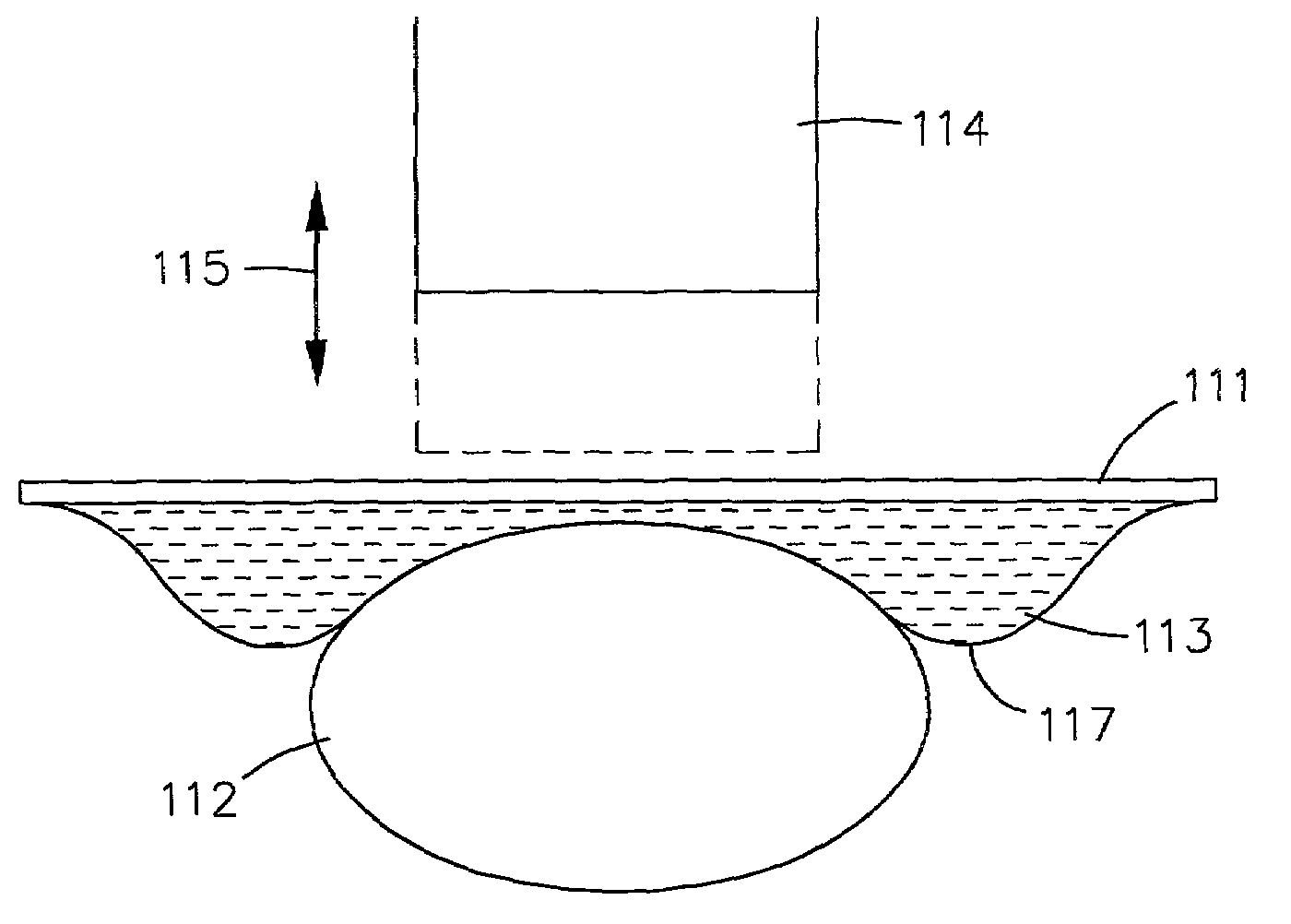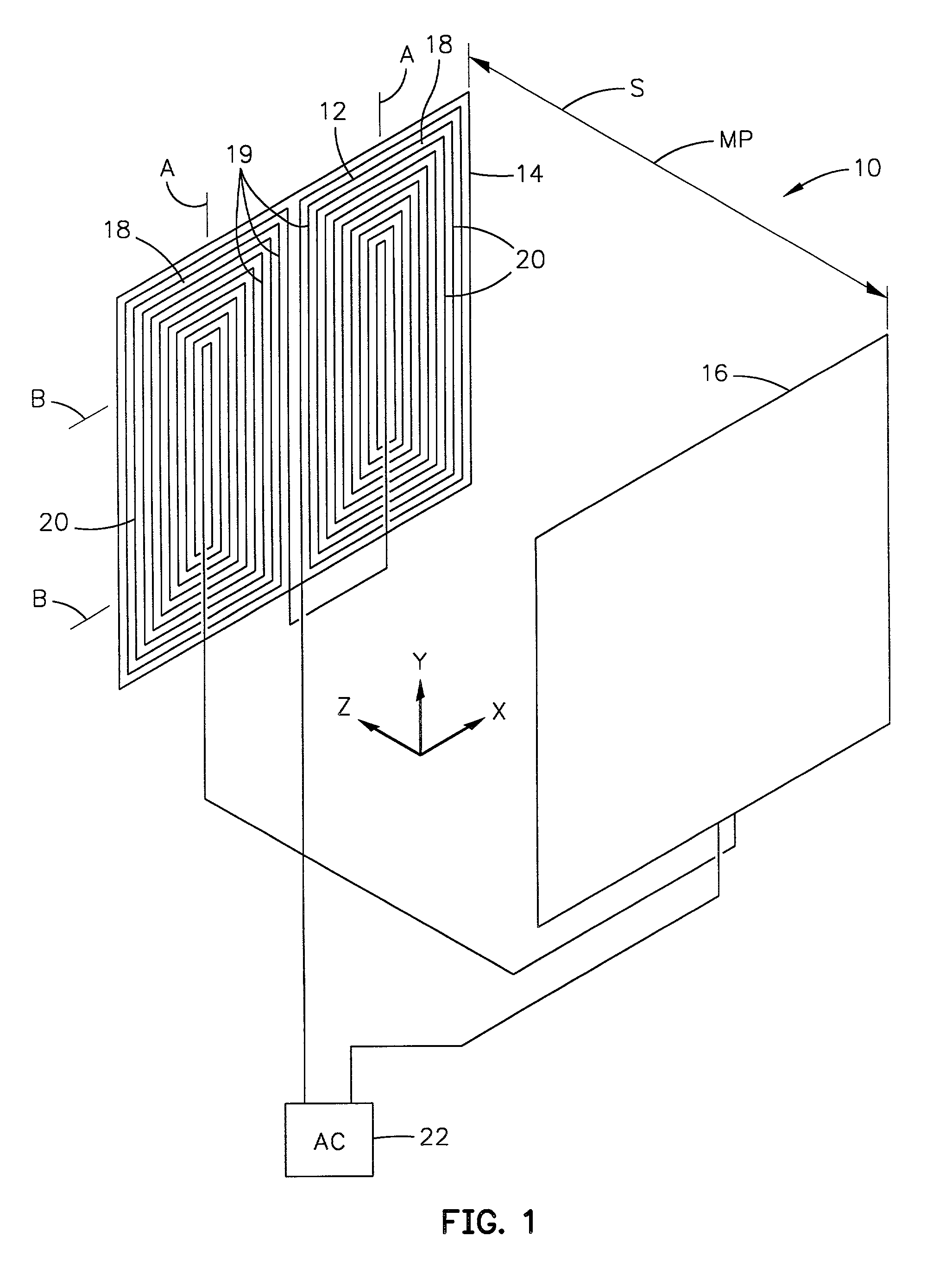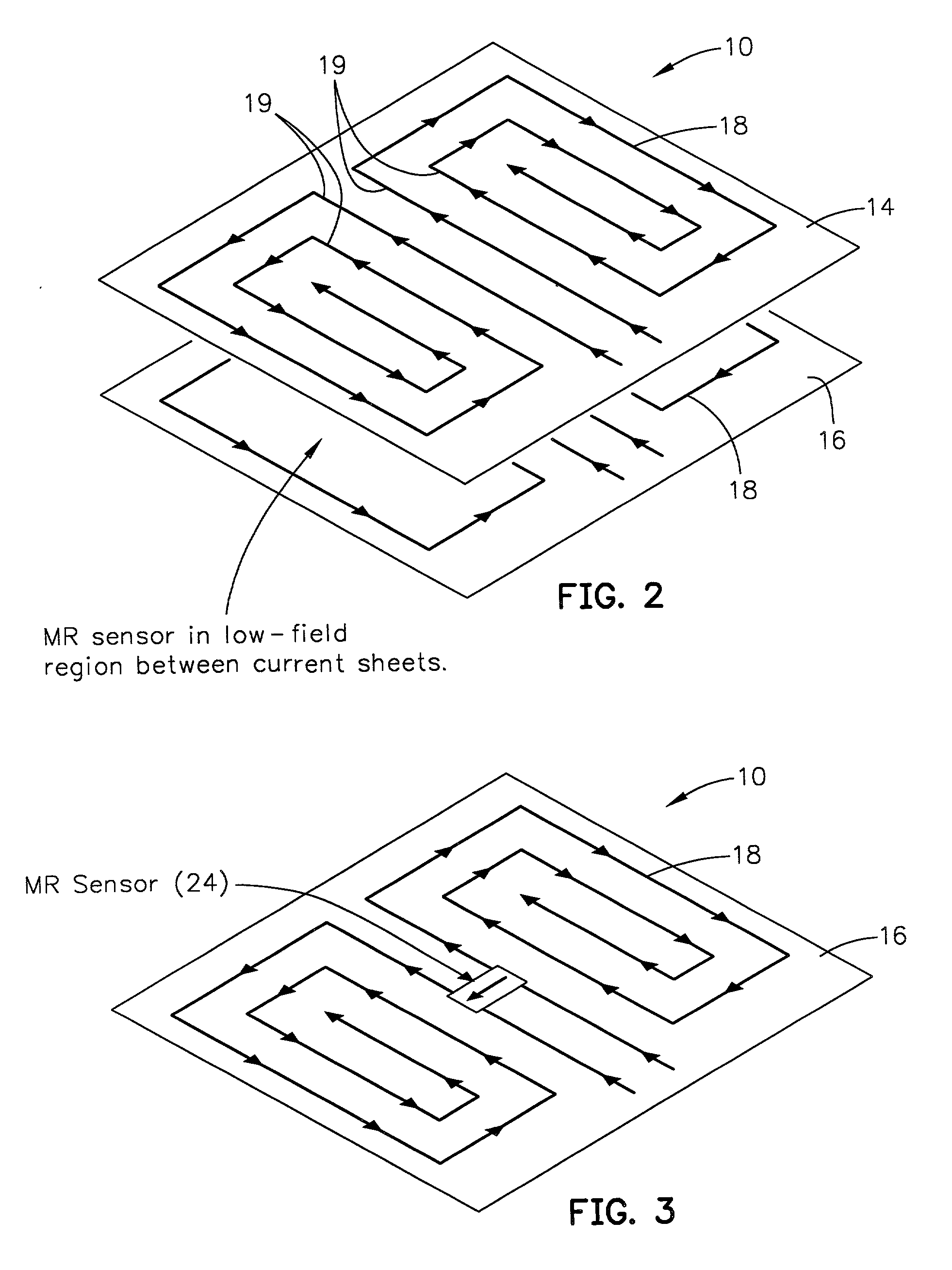Simplified water-bag technique for magnetic susceptibility measurements on the human body and other specimens
a water-bag technique and human body technology, applied in the field of instruments, can solve the problems of liver iron overload, abnormal buildup of iron in the liver, spleen, heart, etc., and achieve the effects of less expensive fabrication and use, accurate and inexpensive way of monitoring liver iron, and sufficient resolution
- Summary
- Abstract
- Description
- Claims
- Application Information
AI Technical Summary
Benefits of technology
Problems solved by technology
Method used
Image
Examples
Embodiment Construction
[0049]The present invention relates to a room-temperature medical probing instrument that measures variations of magnetic susceptibility. In particular, an exemplary liver probing instrument is described that has sufficient resolution to monitor liver iron in patients. The probe instrument of the invention can make magnetic susceptibility measurements with an uncertainty corresponding to a liver-iron concentration of about 30 micrograms per milliliter. This instrumental resolution is roughly ten times lower than the normal liver iron concentration, and thirty times lower than the iron concentration typically maintained in patients undergoing iron chelation therapy. Thus, an inexpensive room-temperature biomagnetometer, as discussed below, provides routine, cost-effective, non-invasive monitoring of iron in a patient's liver or other paramagnetic material as one device according to the invention.
[0050]The noise of the room-temperature instrument is small compared to the uncertainties...
PUM
 Login to View More
Login to View More Abstract
Description
Claims
Application Information
 Login to View More
Login to View More - R&D
- Intellectual Property
- Life Sciences
- Materials
- Tech Scout
- Unparalleled Data Quality
- Higher Quality Content
- 60% Fewer Hallucinations
Browse by: Latest US Patents, China's latest patents, Technical Efficacy Thesaurus, Application Domain, Technology Topic, Popular Technical Reports.
© 2025 PatSnap. All rights reserved.Legal|Privacy policy|Modern Slavery Act Transparency Statement|Sitemap|About US| Contact US: help@patsnap.com



